A functional beverage is a conventional liquid food marketed to highlight specific product ingredients or supposed health effects. [1] [2]
Beverages marketed as "functional" include dairy drinks, sports and performance drinks, energy drinks, ready-to-drink teas, kombucha, "smart" drinks, fortified fruit drinks, plant milks, and enhanced water. [1] [3] Although these beverages may serve to hydrate a consumer, they have no proven health effects, and accordingly appear not to be "functional". [1] [2] For example, there is no good clinical evidence that kombucha provides any benefit to human health. [4]
Health experts are concerned about the increased consumption and popularity of functional beverages. Most functional beverages are sweetened, and consumption of sweetened beverages is associated with higher levels of obesity and heart disease. [1] [2] Most of these drinks contain significant amounts of sugars and hence calories, which would add to discretionary and total caloric intake. As such, these ingredients pose health risks because of what they contain (sugar and caffeine) or what they replace in the diet (vitamin and mineral-rich foods). [1] [2]
Functional beverages are commonly consumed by people seeking health benefits from their foods and beverages. Both convenience and health have been identified as important factors in consumers' decision-making about food and beverage purchases. Functional drinks are advertised as having various health benefits. For example, some claim to improve heart health, immunity, digestion, and joint health, while others promote themselves as satiating and energy-boosting. [1] [2]
The functional beverage industry is a sub-sector of the functional food and non-alcoholic beverage industry. It is the fastest-growing sector of the industry, partially due to the maturity of the carbonated soft drink sector and heavy investments by major food and beverage companies. [5] Another reason for the industry's growth may be the consumer-oriented market scheme whereby innovative ideas come from consumers. By 2008, in the U.S., the market share of functional beverages accounted for 48.9% of the non-alcoholic industry, which is worth $118 billion. [6]
Functional beverage industry players are generally categorized into four types: [7]
Although a "functional" beverage may be marketed as a panacea or a performance-enhancing substance, there is no scientific evidence for any specific health effects of such beverages or for their uniform regulation internationally, as of 2020. [1] [2]
The functional beverage industry generally competes using four primary strategies: [7]
Market segments of the functional beverage industry are divided mainly into four parts. [5] Those include hydration; energy/rejuvenation; health and wellness; and weight management. [5] Each segment has its own target market and consumers. Overlapping of target consumers does occur—not because of undefined market needs, but due to consumer acceptance of functional beverages. [7]
Highly caffeinated, often highly sweetened, energy drinks are common on the beverage market worldwide. Consumer demand has helped generate a new generation of "energy drink" brands containing similar amounts of caffeine, calories, and sugar.
Various ingredients found in energy drinks may include taurine, caffeine, B vitamins, guarana, ginseng, ginkgo biloba, L-carnitine, sugars, yerba maté, and creatine. Although these ingredients have been approved by the United States Food and Drug Administration, health experts recommend that consumers understand contents shown on the product labels, as these ingredients are not included to improve health. [1]
In some functional beverages, particularly energy drinks, the caffeine content can range from 50 to 200 milligrams per serving. [8] According to Health Canada, beverage products with variable levels of caffeine may not be safe for children. [8]

Cola is a carbonated soft drink flavored with vanilla, cinnamon, citrus oils, and other flavorings. Cola became popular worldwide after the American pharmacist John Stith Pemberton invented Coca-Cola, a trademarked brand, in 1886, which was imitated by other manufacturers. Most colas originally contained caffeine from the kola nut, leading to the drink's name, though other sources of caffeine are generally used in modern formulations. The Pemberton cola drink also contained a coca plant extract. His non-alcoholic recipe was inspired by the coca wine of pharmacist Angelo Mariani, created in 1863.

A soft drink is any water-based flavored drink, usually but not necessarily carbonated, and typically including added sweetener. Flavors used can be natural or artificial. The sweetener may be a sugar, high-fructose corn syrup, fruit juice, a sugar substitute, or some combination of these. Soft drinks may also contain caffeine, colorings, preservatives and other ingredients.
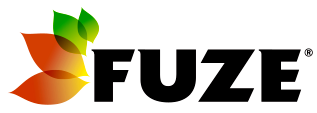
Fuze Beverage, commercially referred to as simply Fuze, is a manufacturer of teas and non-carbonated fruit drinks enriched with vitamins. Currently the brand consists of five vitamin-infused lines: Slenderize, Refresh, Tea, Defensify, and Vitalize. The use of vitamins, amino acids, and herbs, and alternative sweeteners such as crystalline fructose places Fuze products in what is known in the industry as the new age beverage category.
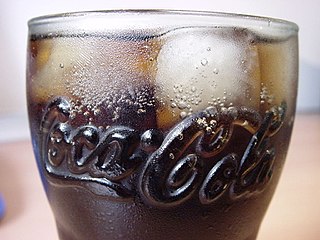
The Coca-Cola Company's formula for Coca-Cola syrup, which bottlers combine with carbonated water to create the company's flagship cola soft drink, is a closely guarded trade secret. Company founder Asa Candler initiated the veil of secrecy that surrounds the formula in 1891 as a publicity, marketing, and intellectual property protection strategy. While several recipes, each purporting to be the authentic formula, have been published, the company maintains that the actual formula remains a secret, known only to a very few select employees.

An energy drink is a type of functional beverage containing stimulant compounds, usually caffeine, which is marketed as providing mental and physical stimulation. They may or may not be carbonated and may also contain sugar, other sweeteners, or herbal extracts, among numerous other possible ingredients.
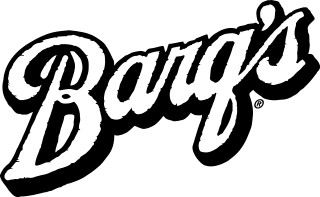
Barq's is an American brand of root beer created by Edward Barq and bottled since the beginning of the 20th century. It is owned by the Coca-Cola Company. It was known as "Barq's Famous Olde Tyme Root Beer" until 2012. Some of its formulations contain caffeine.

Diet or light beverages are generally sugar-free, artificially sweetened beverages with few or no calories. They are marketed for diabetics and other people who want to reduce their sugar and/or caloric intake.

Tab was a diet cola soft drink produced and distributed by The Coca-Cola Company, introduced in 1963 and discontinued in 2020. The company's first diet drink, Tab was popular among some people throughout the 1960s and 1970s as an alternative to Coca-Cola. Several variations were made, including a number of fruit-flavored, root beer, and ginger ale versions. Caffeine-free and clear variations were released in the late 1980s and early 1990s.

Fresca is a grapefruit-flavored citrus soft drink created by The Coca-Cola Company. Borrowing the word Fresca from Italian, Spanish and Portuguese, it was introduced in the United States in 1966. Originally a bottled sugar-free diet soda, sugar sweetened versions were introduced in some markets.

Powerade is a sports drink created and sold by the Coca-Cola Company. Its primary competitor is Gatorade, owned by PepsiCo.
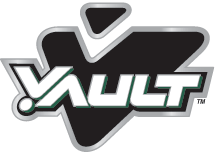
Vault was a sweetened energy drink and carbonated beverage that was released by The Coca-Cola Company in June 2005 and marketed until December 2011. It was touted as an artificially flavored hybrid energy soda. Coca-Cola was marketing Vault as a combination with the slogan "Drinks like a soda, kicks like an energy drink," as well as "The Taste. The Quench. The Kick." "Get it done, and then some", "Chug & Charge", and "Get to it!".
Enviga is a Nestea carbonated canned green-tea drink. Enviga is a trademark of Nestlé licensed to Beverage Partners Worldwide, a joint venture between The Coca-Cola Company and Nestlé. It is available in three flavors: Green Tea, Tropical Pomegranate, and Mixed Berry. According to Coca-Cola, Enviga burns 60 to 100 calories per three 12-oz.(330 ml) cans due to its high EGCG and caffeine content. The makers of the drink were sued for making fraudulent health claims about weight loss, and agreed to settle and cease repeating them.
Energy Brands, also doing business as Glacéau, is a privately owned subsidiary of The Coca-Cola Company based in Whitestone, Queens, New York, that manufactures and distributes various lines of drinks marketed as enhanced water. Founded in May 1996 by J. Darius Bikoff with an electrolyte enhanced line of water called Smartwater, Energy Brands initially distributed its products to health food stores and independent retailers in the New York area. Adding Fruitwater and Vitaminwater to its line in 1998 and 2000, respectively, the company expanded to nationwide distribution in the early 2000s.
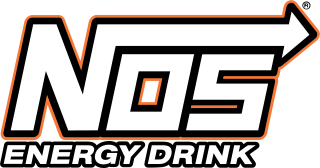
NOS is an energy drink sold in 16-and-24-US-fluid-ounce cans. The drink was also distributed in a bottle designed to look like a NOS tank but this bottle has been discontinued. Formerly a property of the Coca-Cola Company, it is currently produced by Monster Beverage and licensed by Holley Performance, which owns the trademark. NOS contains 160 mg of caffeine, with an unknown amount of taurine and guarana. L-Theanine was removed as a "CMPLX6" ingredient in 2016, with inositol becoming listed as one of the six featured ingredients on the can. NOS Energy is currently available in Original, GT Grape, and Sonic Sour.

Blue Sky Beverage Company was a beverage company that produced soft drinks and energy drinks. It is a wholly owned subsidiary of the Monster Beverage Corporation. The company was established in Santa Fe, New Mexico, in 1980, where it remained until it was purchased by Monster in 2000. Coca-Cola North America took ownership of Blue Sky Sodas, Hansen’s Juice Products, Hansen’s Natural Sodas, Hubert’s Lemonade, Peace Tea and other non-energy drink brands as part of Coke’s partnership with Monster Beverage Corp on Jun 12, 2015. Blue Sky Beverage Company now operates out of Corona, California. The southwestern look and feel of the artwork on the soda cans is reminiscent of the company's roots in New Mexico.

Cherry cola, a distinctive soft drink blend of cherry-flavored syrup and cola, traces its roots to the United States, where it gained prominence in the realm of soda beverages. The origins of this concoction can be situated within the nostalgic ambiance of old-fashioned soda fountains, where it has been consumed by consumers for years.

Coming Together is a 2-minute ad created and distributed by the Coca-Cola Company and launched on the night of January 14, 2013, on several cable networks.

Sugar is heavily marketed both by sugar producers and the producers of sugary drinks and foods. Apart from direct marketing methods such as messaging on packaging, television ads, advergames, and product placement in setting like blogs, industry has worked to steer coverage of sugar-related health information in popular media, including news media and social media.